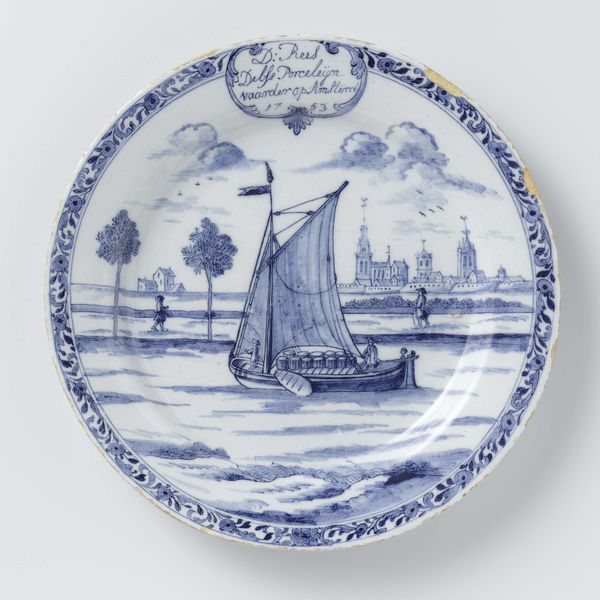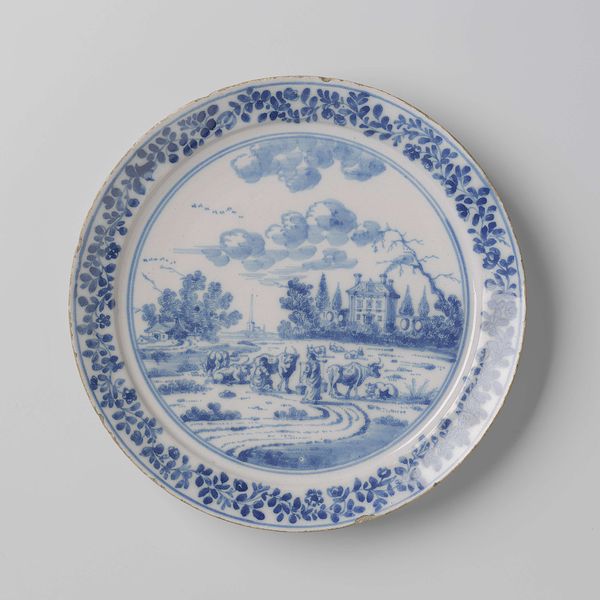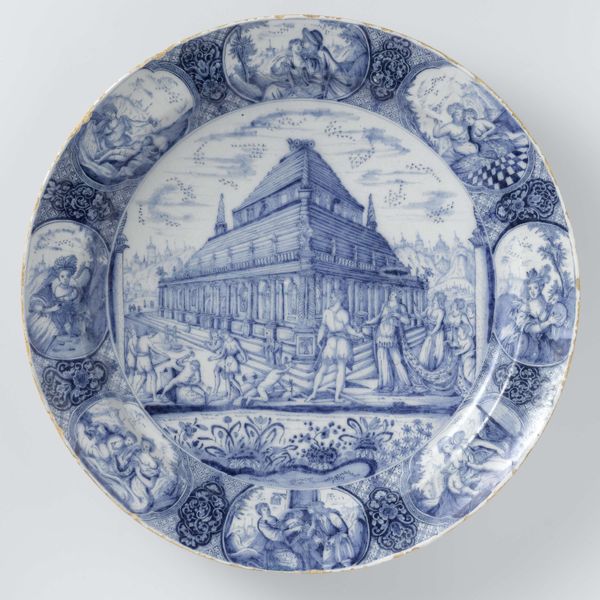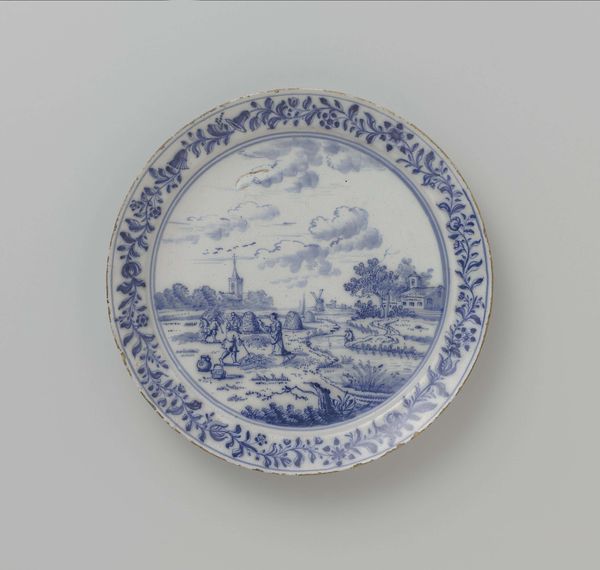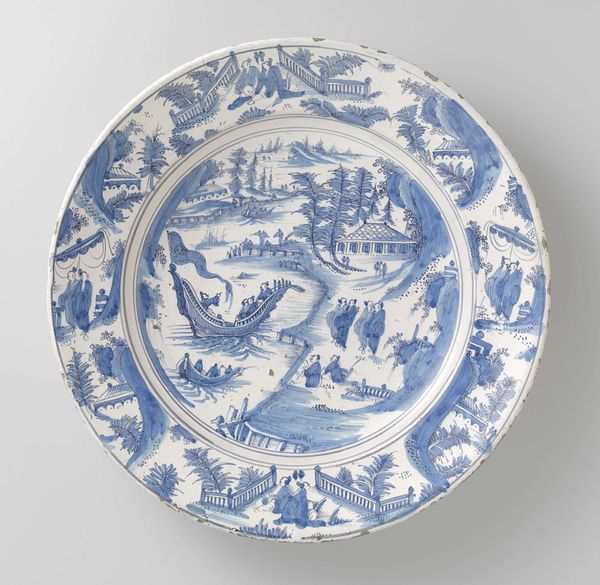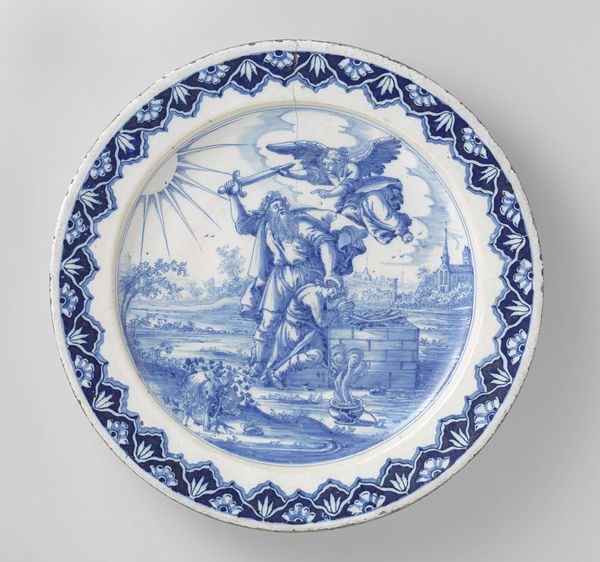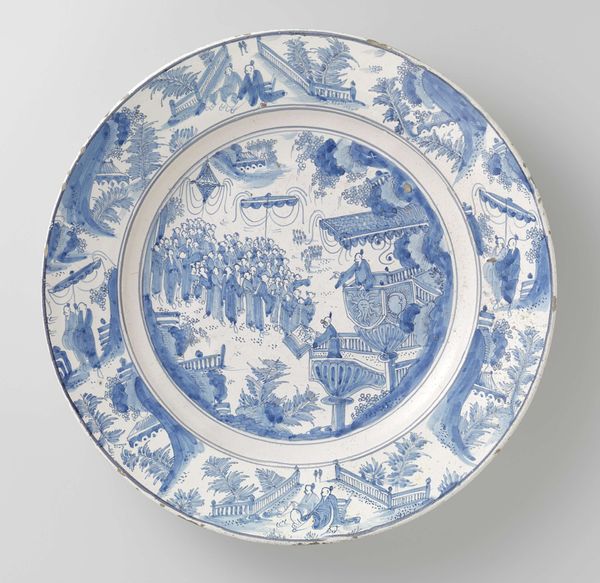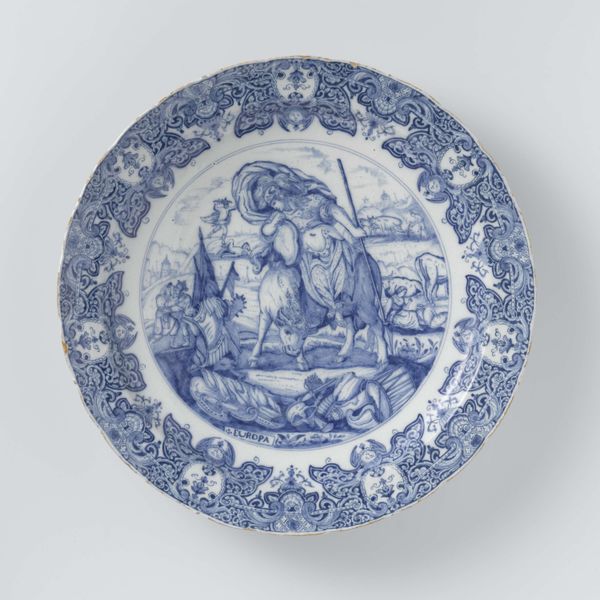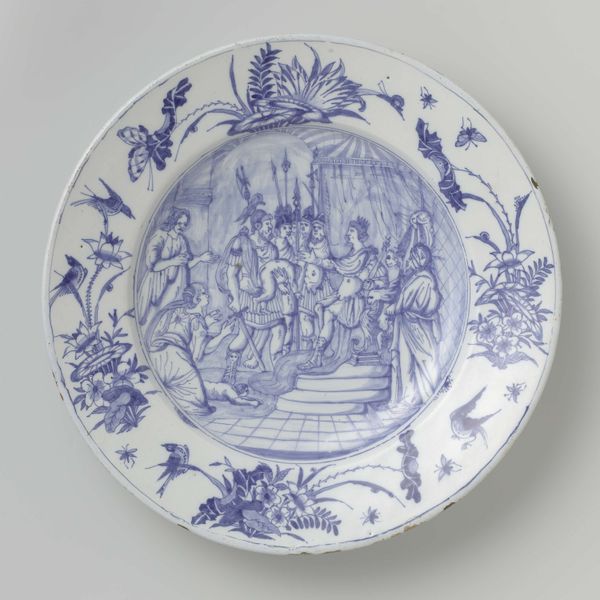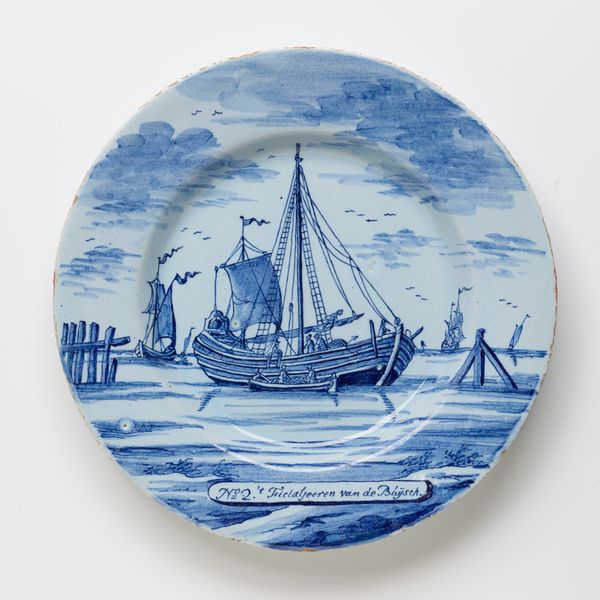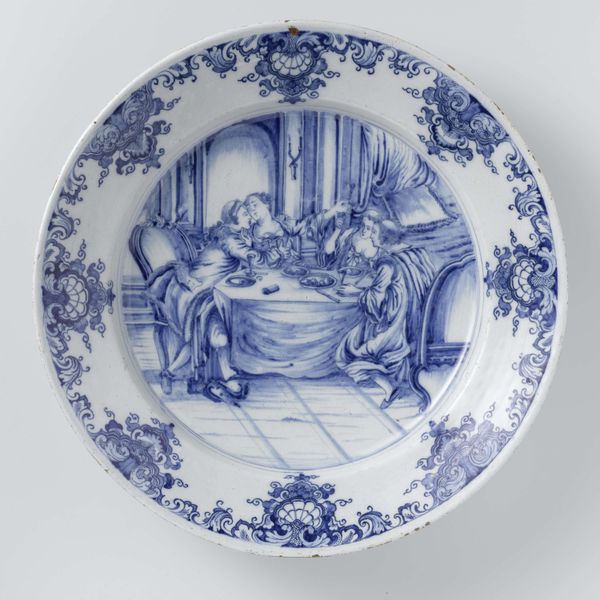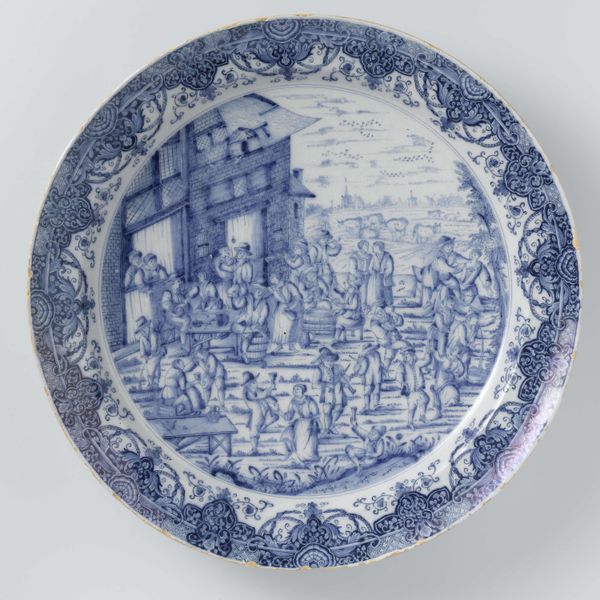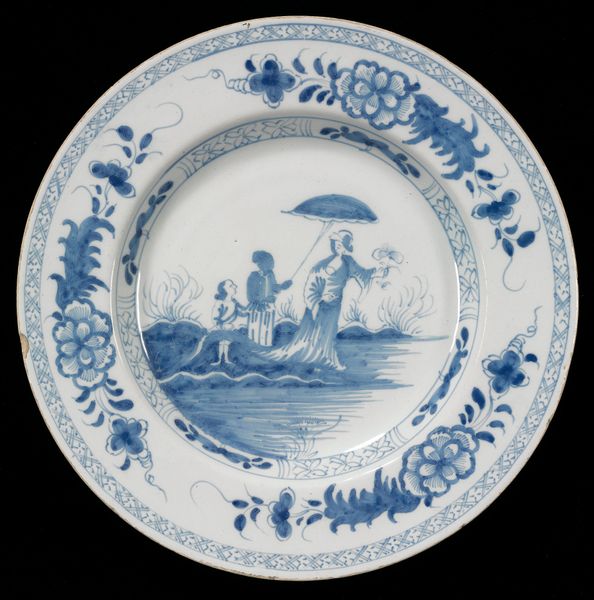
painting, ceramic, pendant
#
dutch-golden-age
#
painting
#
landscape
#
ceramic
#
stoneware
#
ceramic
#
pendant
Copyright: Rijks Museum: Open Domain
Curator: Ah, here we have “Bord,” a Dutch Delftware plate dating from somewhere between 1750 and 1775. Editor: It’s beautiful. I am immediately struck by the monochromatic scheme, how the blue defines space through simple, yet elegant brushstrokes. Curator: Exactly. Notice how the composition is meticulously structured, with the central landscape encircled by geometric and floral patterns. There's a deliberate hierarchy at play. Semiotics could show us that each section signals certain ideals for the commissioner. Editor: Fascinating. It is an idyllic scene, isn't it? It begs the question of craft and the hands involved. Think about the labor—the preparing of the clay, the mixing of the cobalt oxide for the characteristic blue, and the careful firing process that fixes the design. These ceramics workshops of the period would have often had very harsh conditions for the factory laborers. Curator: Indeed, but consider the way the artist segments the scene. It almost mirrors the architectural structuring we often see in paintings from the period, and offers a kind of idealized view we should acknowledge. There’s also the element of perspective here – how the horizon is subtly curved to follow the circumference, and make the whole scene very balanced to the eye. Editor: Very astute, I agree! But the plate’s functionality is also part of the discussion. Delftware often imitated more expensive Chinese porcelain and became popular in households because it made luxury items more accessible to a rising merchant class. “Bord" would be functional and a clear status symbol. The very availability of this imagery speaks volumes about the socio-economic climate in Holland at the time. Curator: I appreciate your perspective. Focusing on the societal impacts as opposed to just the compositional structure is vital. Editor: Agreed! It’s a satisfying conversation that is very relevant to this era of Dutch history. I appreciate that there's material for both formalism and materialism here.
Comments
No comments
Be the first to comment and join the conversation on the ultimate creative platform.
